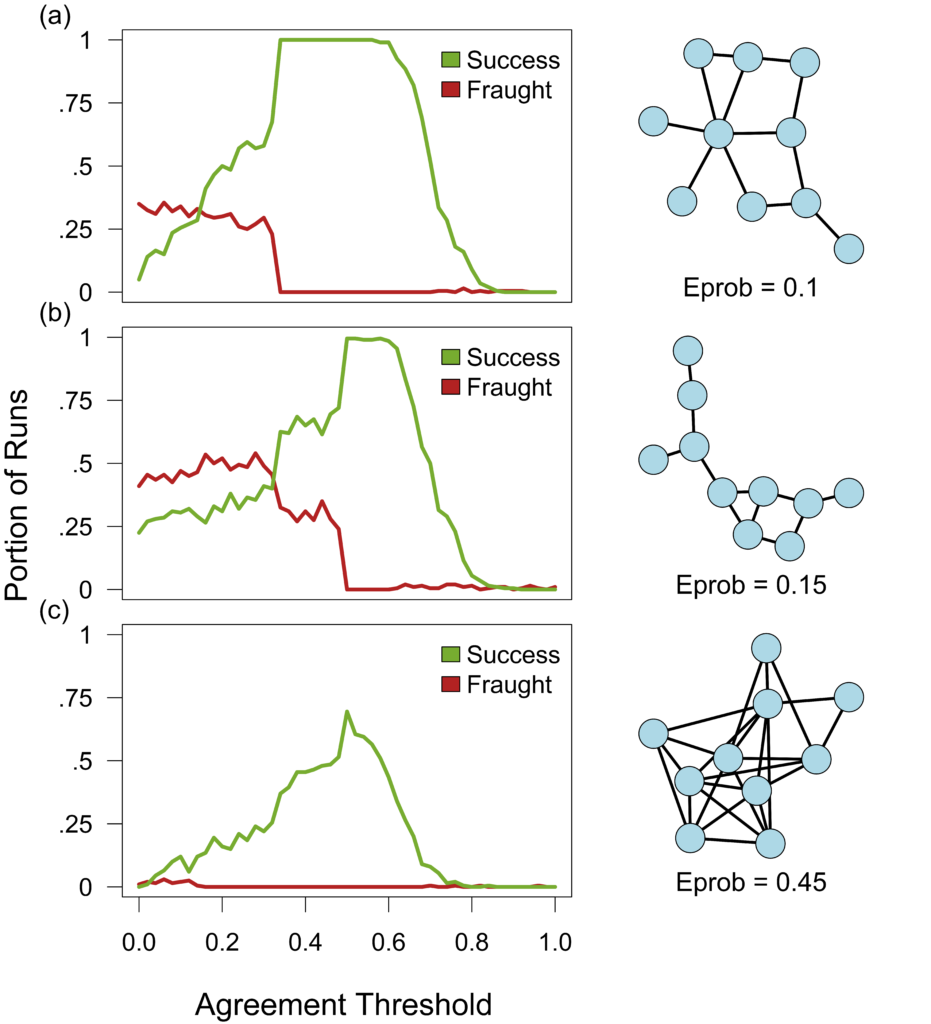In a collaborative project with UConn Psychologist Whitney Tabor, we are attempting to uncover common properties of group coordination in self-organizing complex systems. We are especially interested in properties that are prone to failure such as fraughtness, or obdurateness. Our research highlights the role of individual flexibility, or compromise, in correcting deleterious behavior.
To explore these issues, Dr. Tabor and I have expanded upon an agent-based model that was introduced in 2021. We employ a unique dynamical systems analysis and social network analysis to explore relationships between group size, network configuration, and local agreement parameters. The model was created in MATLAB, and can be downloaded at the osf page linked below.
Updates:
Dr. Tabor and I presented our preliminary findings at UConn’s Perceiving Acting Workshop in October of 2022. We are planning to submit our paper to the Santa Fe Institute’s new research journal, Collective Consciousness, in December, 2022.
Dr. Tabor and I submitted our paper, “Optimal group coordination requires intermediate flexibility,” to Collective Intelligence on August 5th, 2023. We are awaiting feedback from reviewers.

All of the data and code is available for replication on OSF.